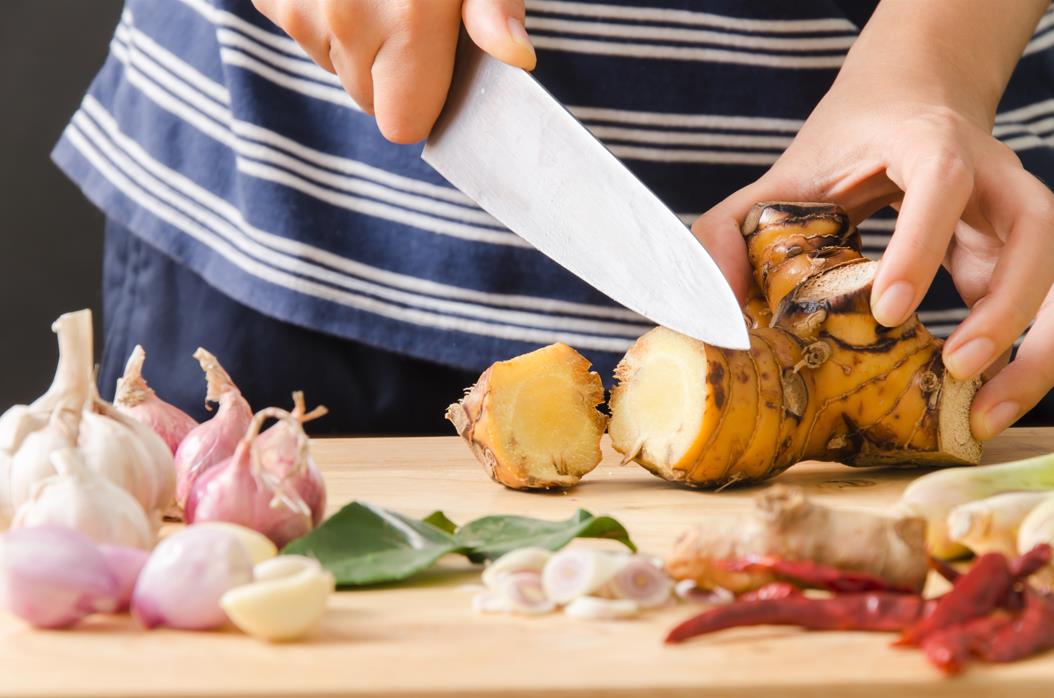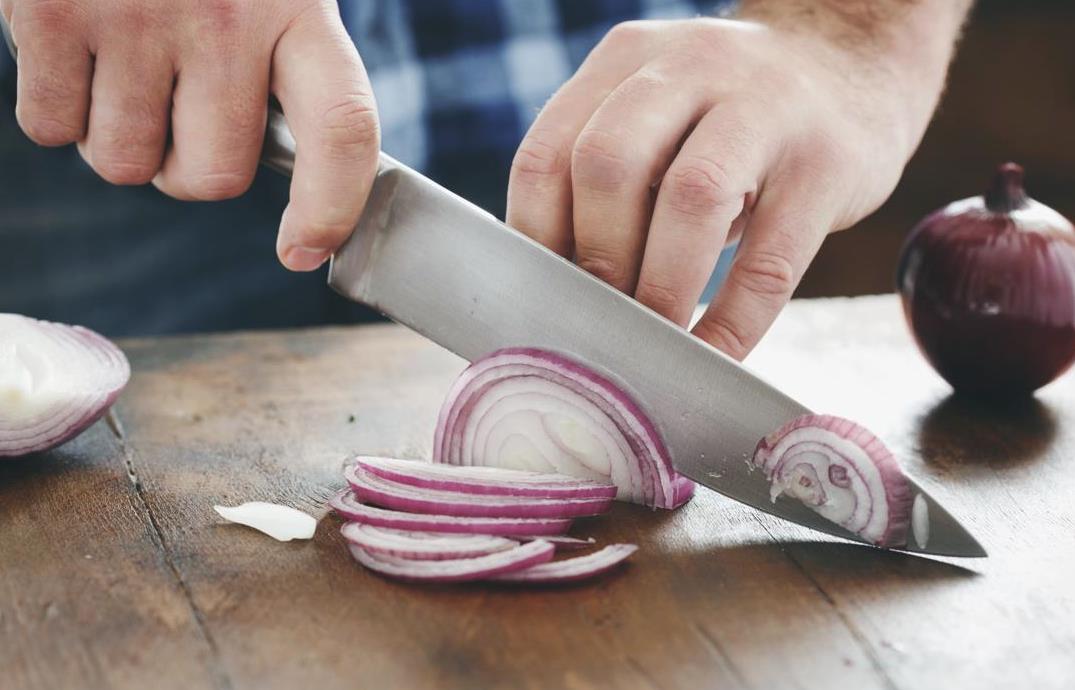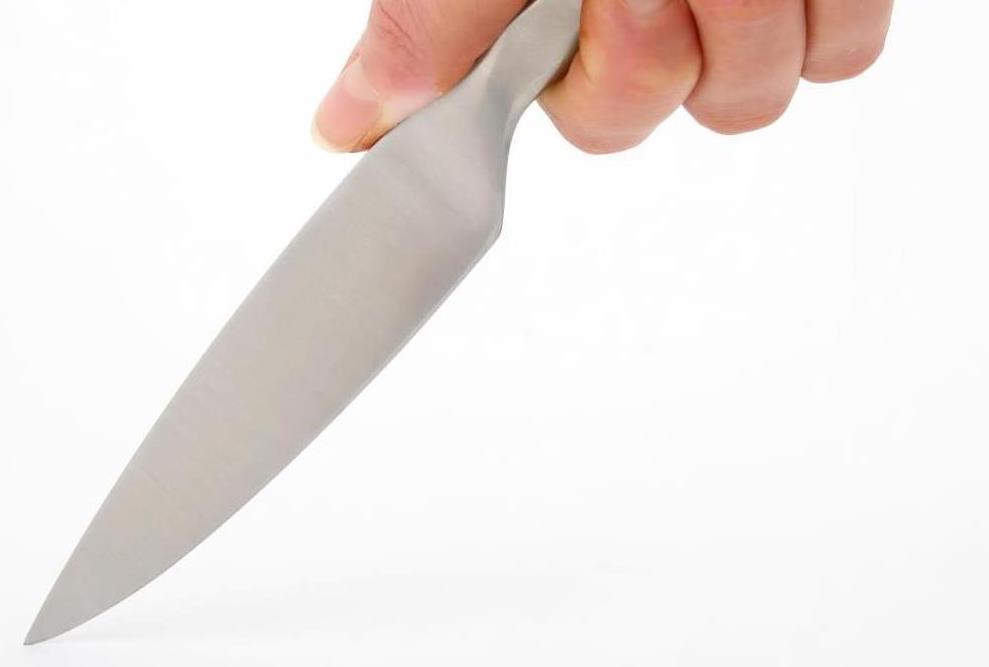Carbon steel knives demand more from their users, but this comes with many perks. If you’re willing to care and store a carbon steel knife properly, it will treat you right just as you do.
Carbon steel knives, especially high carbon steel knives, are known for their fantastic edge-retention. Because carbon steel knives are a lot harder than their stainless steel counterparts, you sharpen them once and don’t have to worry about having to sharpen again so soon.
Although this is something that generally professional chefs benefit from as they use their knives more frequently, any home cook can also take these advantages.
This buyer’s guide will detail everything you need to know about carbon steel knives, whether it’s for you or not, answer commonly asked questions, and help you make the right choice.
Table of contents
What exactly is a carbon steel knife?

Pretty much all steels have some amount of carbon in them but to what degree makes the real difference. Just cause any steel has carbon doesn’t mean that it can be considered carbon steel. There are three types of carbon steel that are categorized based on their actual carbon content. These types of carbon steel are named low carbon steel, medium carbon steel, and high carbon steel – pretty straightforward. The following list shows the carbon content of each.
- Low carbon steel: 0.3 percent or less
- Medium carbon steel: 0.3 to 0.6 percent
- High carbon steel: 0.6 percent and more
To put this into a better perspective, think of it this way: if the steel has 1,000 atoms and contains more than eight carbon atoms, it’s high carbon steel. Of course, the actual number of atoms is more than that in a piece of steel, but you take it, forge it, make a blade, and install a handle; now you have a carbon steel knife.
Now that you know what carbon steel knives are, here are some of the pros and cons to expect.
Carbon steel knives advantages
- They keep a sharp edge for longer than the overwhelming majority of other steels.
- As carbon steel is extremely tough, the cutting edge is sharper.
- Carbon steel knives are surprisingly easier to sharpen than their stainless steel counterparts despite the higher hardness.
Carbon steel knives disadvantages
- They require more upkeep than stainless steel knives.
- Carbon steel knives can rust if they’re not appropriately washed and stored.
- The high hardness also comes with downsides like being brittle; therefore, they are more prone to chipping or cracking.
Are carbon steel knives for me?
Carbon steel knives aren’t for everyone as they need more supervision than their stainless steel counterparts. After some use and time, carbon steel knives will develop a patina, or you will have to force it yourself so that it doesn’t affect the foods you’re cutting.
Handpicked for you
True cutting power in the palm of your hand
Additionally, storing carbon steel knives is quite different than most other kitchen knives. You’ll need to cover the blade with food-grade mineral oil to prevent further oxidation when it stays in your drawer. These all add up to the ownership of a carbon steel knife, and it’s normal if you’re not up for it.
In exchange for these, however, you get a somewhat better-performing knife that makes cutting ingredients effortless and more enjoyable. Due to this, many people look forward to using their carbon steel knives. These make preparing dishes something that you await with excitement, which results in tastier and flavorful outcomes.
The bottom line is if you’re okay with showing a little more care to a knife in exchange for better cutting, a carbon steel knife is perfect for you.
Carbon steel knife recommendations
The following are our suggestions on what to buy, along with things you should keep in mind when purchasing a carbon steel knife. Since there isn’t a universally accepted best carbon steel chef’s knife as everyone has their preferences, consider what you demand from a kitchen knife and decide accordingly.
HDMD Serbian Chef’s Knife
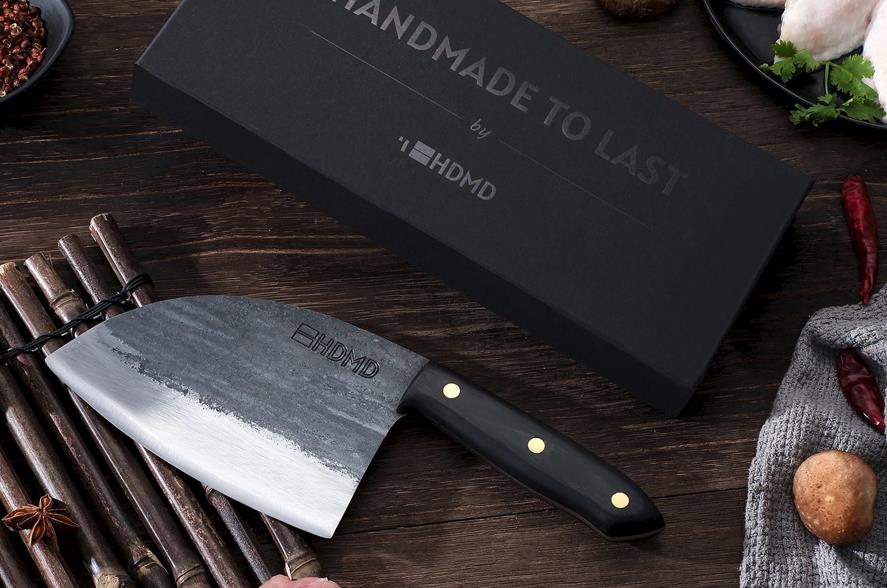
The HDMD Serbian chef’s knife comes with a wide blade that makes it ideal for cutting through ingredients that are hard to cut as applying force on the blade is easier. Think of the blade as something that you can use on everything.
Slicing through vegetables and fruits is the same as any other kitchen knife despite having a wide blade. As it’s narrowly curved, you can rock the blade over the ingredients to chop them or with up and down motions like you would with a santoku knife.
HDMD Serbian chef’s knife pros
- The hardened high carbon steel makes it a highly durable knife that resists chipping compared to other carbon steel knives.
- The blade design allows for making both delicate and fierce cuts.
- It keeps an edge for long but is also easier to sharpen.
HDMD Serbian chef’s knife cons
- The lengthy handle (4.7″/12cm) isn’t greatly manageable for cooks with small hands.
- The HDMD Serbian chef’s knife’s blade and weight may take some time to feel familiar.
HDMD Hand Forged Chef’s Knife
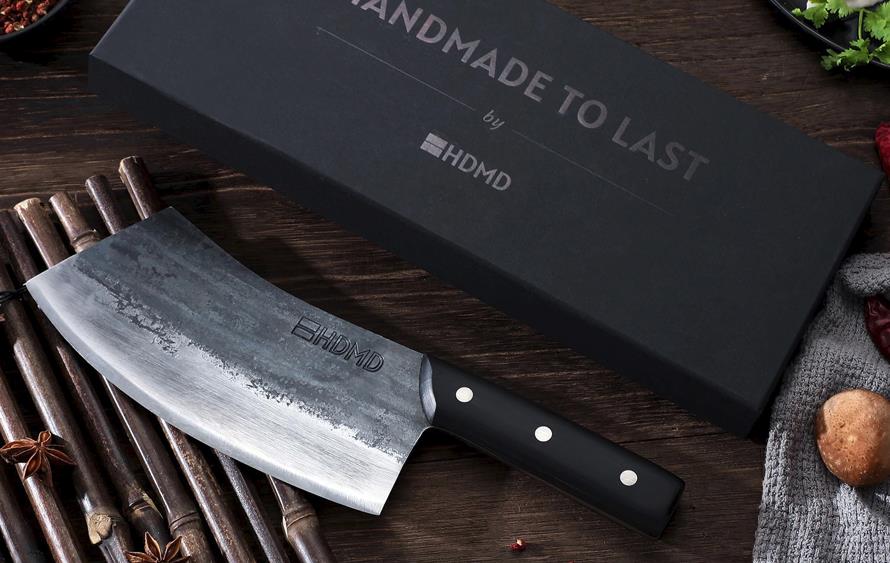
The HDMD Hand Forged chef’s knife is the go-to for those looking to get something that is more for everyday work. If you’re particularly cutting lots of meats and preparing steaks, you can take advantage of what this knife has to offer.
It comes with a curved, 7.3-inch blade that is practically good for finely chopping anything. Cooks that are used to cutting ingredients by rocking the blade can significantly benefit from the design. Put your hand on the spine towards the tip and continuously tilt the blade over the foods to have them chopped or minced. You can even take a chunk of meat and have fresh, grounded beef at home by mincing it.
HDMD Hand Forged chef’s knife pros
- The cleaver-like blade design makes chopping meat effortless.
- Finely chopping and mincing foods when preparing large dishes is effortless.
- Superb edge retention that doesn’t need sharpening as often.
HDMD Hand Forged chef’s knife cons
- Some may find the knife too big for slicing vegetables and fruits.
- Sharpening the blade requires a large whetstone.
While these are our products, there are also other well-known brands that make carbon steel knives. Some are handmade like ours; some aren’t – if that’s something you look for in kitchen knives.
Top brands to consider
- Dalstrong: Dalstrong is one of the few knife manufacturing companies that offer carbon steel knife sets. We don’t recommend sets as they come with blades often left unused, but it’s a consideration for those looking to get a complete collection.
- Misono: Misono is a traditional Japanese knife maker. Although not all of their knives are carbon steel, they offer a variety of them.
- Global: Global is an internationally recognized knife manufacturer with various carbon steel knives, but their products tend to be pricey for most home cooks.
Carbon steel knife buying guide
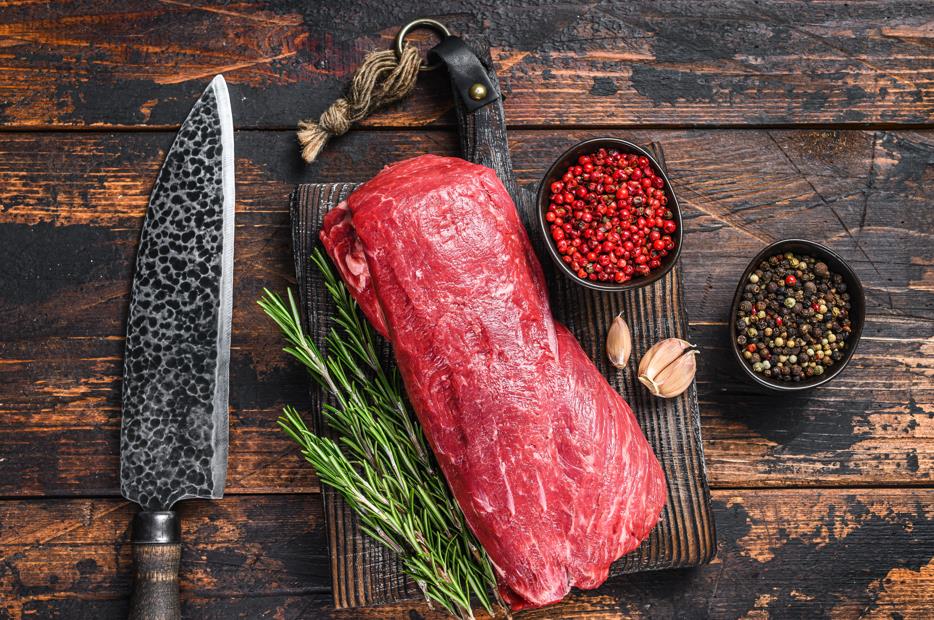
There are many to question about carbon steel knives, especially if you’re entirely new to them. One thing that most can’t avoid is comparing them with stainless steel knives, as these types of blades are the most accessible and popular. While we’ll get to that in a moment, there are other things to consider as well.
This is our complete buyer’s guide that explains everything you need to know about carbon steel knives and how to care for one.
Carbon steel knives vs. stainless steel knives
The differences between carbon steel and stainless steel knives can be vast or minimal, depending on how you look at them. They’re both pretty much the same except for the chromium, the element that makes stainless steel knives resistant to rust. As you can guess, carbon steel doesn’t have chromium.
Having rust-resistant traits in a kitchen knife is undoubtedly great, but this comes with some downsides that make it unfavorable to many cooks, especially those that are serious about their job. When chromium is added to the mix, it makes the steel softer, resulting in a blade that doesn’t hold an edge for as long, especially compared to carbon steel knives. This means sharpening more often, which isn’t good if you’re using your knife for hours at a time every day.
This is not to say that carbon steel knives don’t have any drawbacks. As explained above, carbon steel isn’t as resistant to corrosion as stainless steel, making them susceptible to oxidation and rust. A carbon steel knife requires more care and respect than a stainless steel knife. You can’t just leave it in the sink dirty like you could without worrying too much with a stainless steel knife, although you shouldn’t regardless.
The point is stainless steel doesn’t have a problem with corrosion, but carbon steel might. However, a carbon steel knife will perform better if you show enough care, keep it clean, and store it properly – with these; corrosion won’t be a concern.
Learn more about the key differences between carbon steel and stainless steel.
How to care for a carbon steel knife?
Now comes the critical part – caring for a carbon steel knife. As explained throughout this buyer’s guide – we can’t stress this enough – carbon steel knives need more care, and when neglected, oxidation is inevitable.
Cleaning
The same as all other knives, hand-wash and keep them dry. Never put a carbon steel knife in the dishwasher as the high heat and harsh chemicals from the detergents can ruin it quickly.
Always clean a carbon steel knife using dish soap and warm water. Rinse it thoroughly so that there aren’t any residues left. Perhaps the most crucial mistake people make when cleaning their knives is to leave them to air-dry. This is a big no-no with carbon steel knives as moisture leads to oxidation. Dry your carbon steel knife entirely with a clean kitchen cloth, then store it away.
Storing
Due to the hardness of carbon steel, it’s more brittle than most other kitchen knives. That’s why it’s recommended to keep them in sheaths, blocks, or magnetic strips. Doing this will ensure that the blade’s edge is safe, but if you’re not going to use a carbon steel knife for some time, even for a few days, applying food-grade mineral oil on the blade is highly recommended. The oil acts as a cover between the steel and air, preventing oxidation.
Also, make sure your carbon steel knife is clean and dry before putting it away. Even a tiny bit of food remains or moisture can lead to oxidation concentrated in that area.
Sharpening
There isn’t a difference between how you will go about sharpening a carbon steel knife or any other steel knife. Use a whetstone to create a new edge and do this at least once or twice a year to ensure that knife performs at its best. Read this to learn how to sharpen a knife using a whetstone.
If you don’t have a whetstone, we highly suggest investing in one to keep all of your blades sharp, but there are also ways to sharpen a knife without a whetstone.
FAQs
Is carbon steel harder than stainless steel?
Carbon steel is a lot harder than stainless steel. The reason being carbon as a chemical element contributes more to hardness than chromium.
How to force a patina on a carbon steel knife?
Forcing patina on a carbon steel knife isn’t that big of a necessity. Your carbon steel knife will slowly form a patina with or without use due to oxygen. Nonetheless, you can learn ways to force a patina on a carbon steel blade using household items.
How much should you spend on a carbon steel knife?
It takes more work to make a carbon steel knife, increasing the price tag. You can expect to spend anywhere from $50 to $250 for a high-quality carbon steel knife. Luckily, the carbon steel knives we manufacture are on the affordable side.
Are ceramic knives harder than carbon steel knives?
Although it’s not metal, ceramic is the hardest material to make a knife. These knives have grown popular over the last couple of years for keeping a cutting edge for a long time, but this comes with significant downsides. Ceramic knives are too brittle for many of the cutting needs, and even dropping them from relatively high distances like from your shoulder to the countertop can result in the blade shattering entirely.
Final words
Undoubtedly, carbon steel knives can contribute a lot to the ways you’re cutting. They are sturdy, keep an edge for an exceptionally long time, and overall one of the best companions a culinarian can desire. Read more buyer’s guides on our blog and shop our collection.







